How to perform a domain name transfer
In this example, we are going to transfer a domain name TutorialWriter.com that we have currently registered on GoDaddy.com to HostMonster.com. HostMonster.com is both a web host and also registers domain names. Some people like to have domain names be registered with the same company as their web host.
Hostmonster in our example is the gaining registrar, because it is gaining a domain name registration. GoDaddy is the losing registrar.
1. First, log into the losing registrar, GoDaddy, to unlock the domain name.
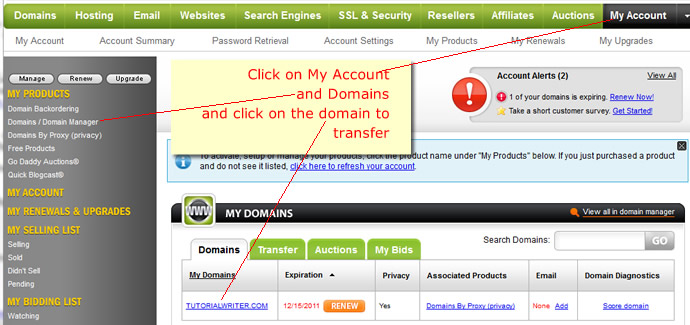
domain to transfer
You do this by going to “My Accounts -> Domain Manager” and then clicking on the domain name that you want to transfer.
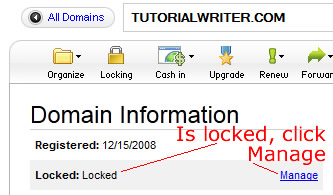
domain name is locked
2. As you can see, that domain name is currently locked. A domain name cannot be transferred when it is locked. Click the “manage” link and uncheck “Lock domains”. Click OK.
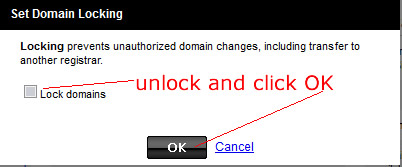
unlock domain name
3. In some cases, the domain name transfer may not go through if you have private registration turned on. For example, GoDaddy uses domainsbyproxy.com for private domain name registration. If that is the case, then login to domainsbyproxy.com then turn private domain name registration off.

cancel private registration
Note that both these changes may take a few minutes for the change to take effect.
4. Once the domain name has been unlocked, you need to get the auhtorization code (also known as EPP code) from the losing registrar. In GoDaddy, you would click the “send by email” link as shown here …
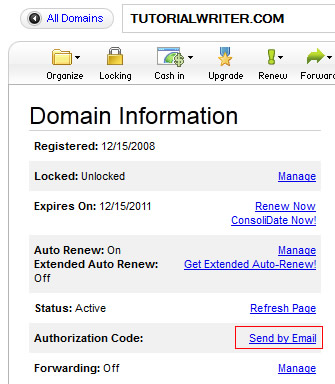
send EPP code
Make sure that the administrator contact email is correct, because that is where GoDaddy will send the code.
5. Now go to the gaining registrar to initiate the transfer. After logging into HostMonster’s cPanel, go to Domain Manager and click “transfer to a new domain to your account”.
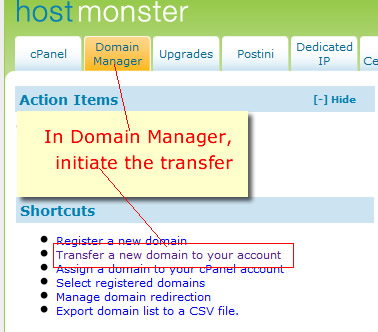
initiate transfer in domain manager
6. Enter the domain name to be transferred. Do not type the “http” nor the “www”. And click continue.
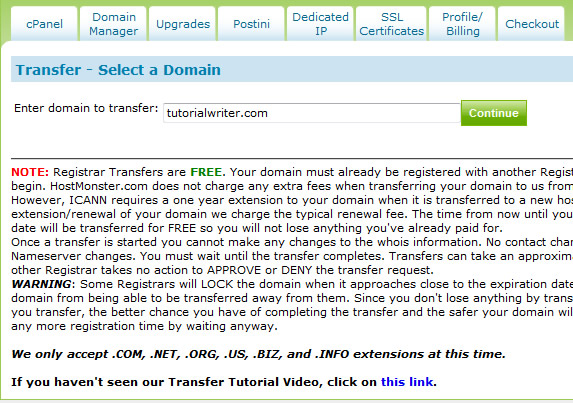
domain name to be transferred
7. Next is where you entered the EPP code that GoDaddy has sent you.

Enter EPP Code
8. After the EPP code, there may be an additional check where Hostmonster emails an “admin verification code” to the admin contact email of the domain name. Enter the “Admin contact verification code” and click “Continue”.
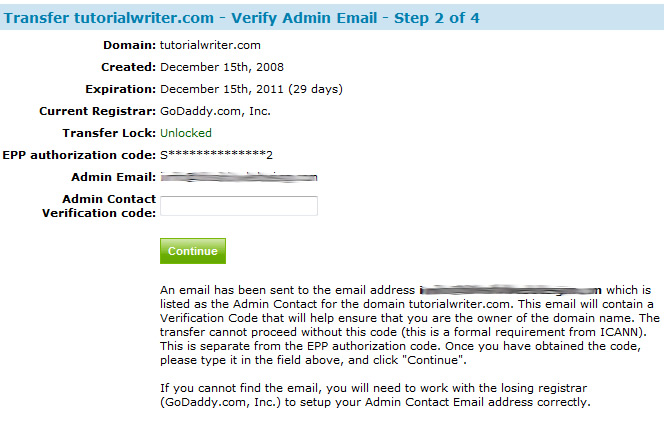
admin verification code
9. Complete the transfer as shown below and complete the purchase with the winning registrar.

complete domain name transfer
10. In Hostmonster Domain Manager, you can see the status say “Waiting for GoDaddy.com to release domain”. This can take up to one week.
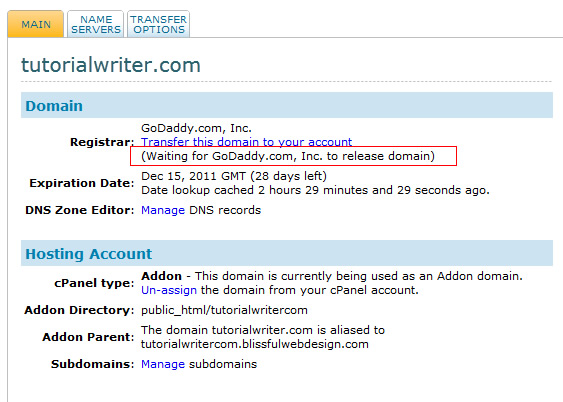
domain name transfer status
11. If all goes well, the domain name should be transferred to the winning registrar. You can see when the transfer has completed in Hostmonster here …
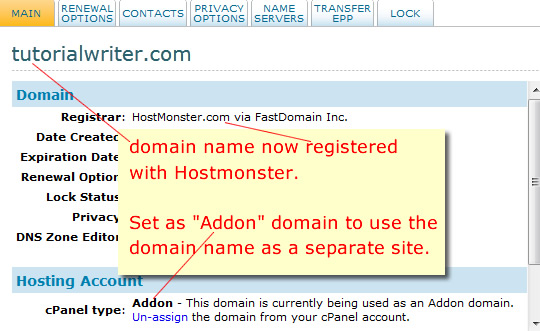
registrar changed
12. When domain transfer is successful, lock the domain name with the winning registrar so that it does not inadvertently get transferred away. You can also set auto-renew of the domain and domain name privacy if you like.
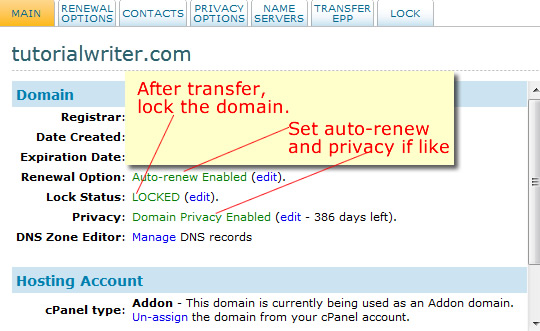
lock domain
13. And the domain name no longer shows up in the losing registrar. GoDaddy says there is no domain here …

domain name transfered
Note:
In our example, we have assumed that we did not have a domain name email set up associated with the domain name. If we did, it would be more complicated. Since domain name email address goes with the domain name, you would need to set up the same domain name email address on Hostmonster. During this transition period, you would need check emails on both GoDaddy and Hostmonster. And if there is a website already being hosted on the domain name, you need to re-point the DNS pointers to the webhost where the website is hosted.






